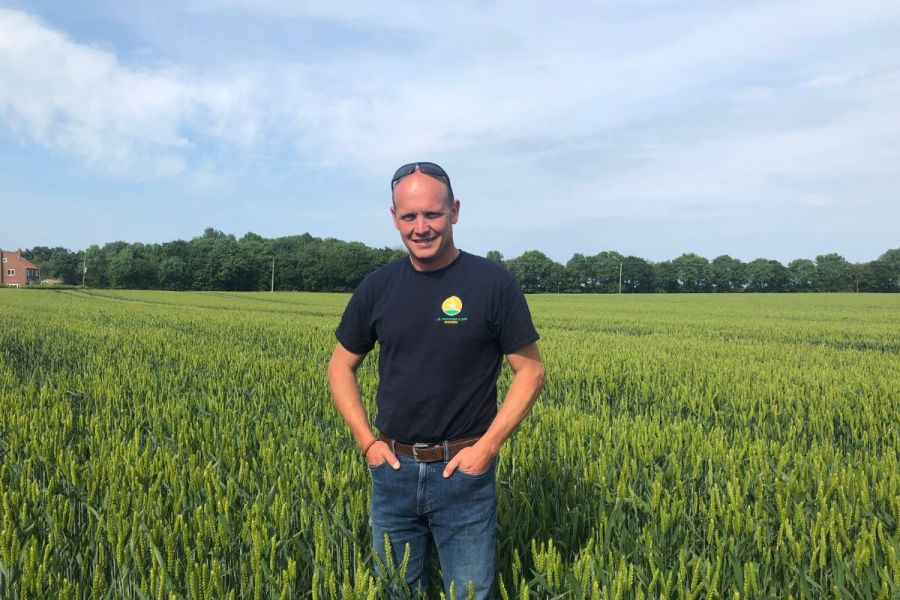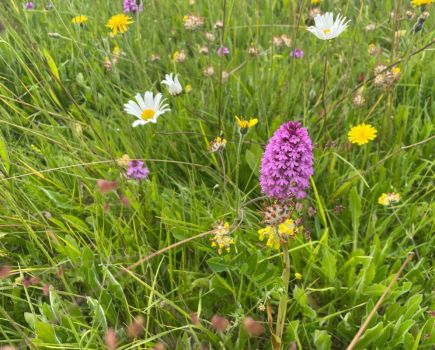On farm trials are a great way of testing the water before leaping in and this is just what a Yorkshire farmer has been doing as he’s changing the way he farms. CPM joins a BASE-UK farm walk to find out more.
We’re trialling a few things to evaluate whether it works before rolling it out across the farm.
By Mike Abram
System change is happening fast in East Yorkshire, albeit not without some challenges at Jonathan Hodgson’s 280ha Great Newsome Farm in South Frodingham.
The fourth-generation farmer was looking to simply cut establishment costs when purchasing a Mzuri ProTil strip-till drill in January 2019, but that quickly snowballed into a more all-encompassing plan aimed at improving soils and soil health.
It was reading Gabe Brown’s ‘Dirt to Soil’ that provided his initial inspiration, says Jonathan, and BASE-UK’s member webinars during lockdown in 2020 that helped increase his knowledge. He says it’s that research which has improved his understanding of soil, and means he feels confident challenging conventional wisdom – with the help of new adviser Ben Taylor-Davies and his agronomist.
Even though soil is front and centre, a key goal is to maintain profitability, stresses Jonathan. “We don’t have deep pockets, so we need to make it work.”
The switch to strip-till on soils that have a high magnesium content is part of that pragmatism, replacing a mostly deep tillage, non-inversion establishment system which was based on a Väderstad TopDown and Rapid drill. Previously all land before second wheat and spring crops was ploughed, but the systems change has seen diesel use cut to around 18 l/ha from 60-70 l/ha in the conventional system.
“I wasn’t confident enough to go to a disc drill straightaway and using a strip-till drill is a good stepping-stone. We will keep evaluating drills that move less soil and see how our soils react. I’m looking at it as a transition period, although we may never get to the point we can use a disc drill,” he says.
But the changes are much broader than just switching drills, with a much more diverse rotation, cover crops, techniques to reduce inputs and livestock integration all introduced.
Historically the rotation was mainly based around four crops – winter wheat, spring barley, oilseed rape and vining peas. Those all still remain, but he’s also growing spring oats, spring beans and this season flax, as well as catch crops after the vining peas and overwintered cover crops before his spring crops.
“I’m trying to get a longer rotation, not overdo any one crop and focus on first wheats to spread risk, as well as increasing diversity in the soil. We only have limited storage so storing all these crops, even just at harvest until they get moved, is a challenge,” he admits.
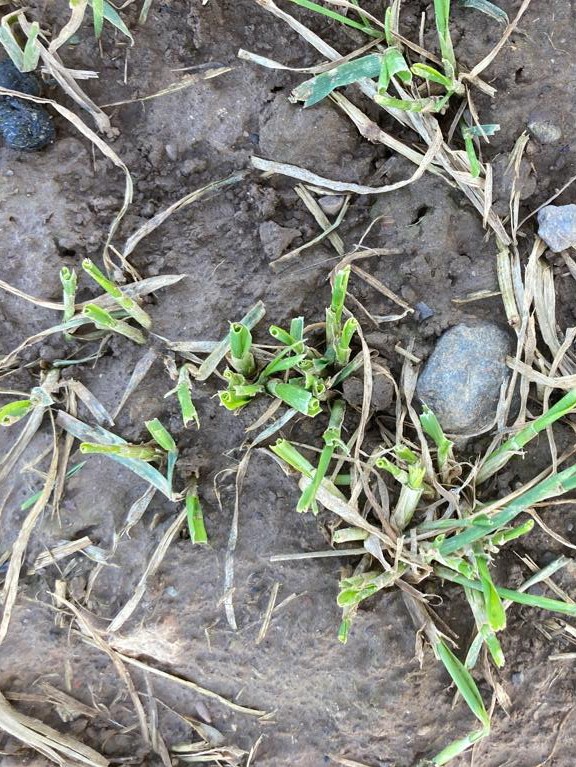
The crop was “nailed” by the sheep and Jonathan was a little worried about how little was left, but within 48 hours it was growing again.
He’s not sure how he’ll deal with having both vining peas and spring beans in the rotation as an eight-year gap is required after a legume crop before vining peas. Both bring advantages – margins from spring beans are currently higher than vining peas, while the peas allow him to get a catch crop in before wheat.
“You have to plough before vining peas. I don’t particularly want to, but it does give a reset button for fields with blackgrass. I haven’t quite worked out what to do – maybe grow less of both, but it’s still work in progress.”
Growing flax is also a trial. A neighbouring farmer has built a fibre business – East Yorkshire Hemp – growing hemp for mattresses, among other uses. And he’d been approached to grow flax for the same use. At the time, Jonathan was considering growing linseed again as the farm used to get good first wheats following it, probably due to its good synergy with soil biology, but he switched to 11ha of flax instead.
“It’s one of the fun parts about what we’re doing – opening our minds to different avenues which we wouldn’t have looked into previously.”
The flax was mown in mid-July, spread out and left for six weeks before being baled. “One challenge is keeping soil and other foreign objects out of the flax – you don’t want to contaminate it too much.
“It won’t be the most profitable crop on the farm,” he admits. “But we’re willing to give it a try and hopefully a market will develop for it.”
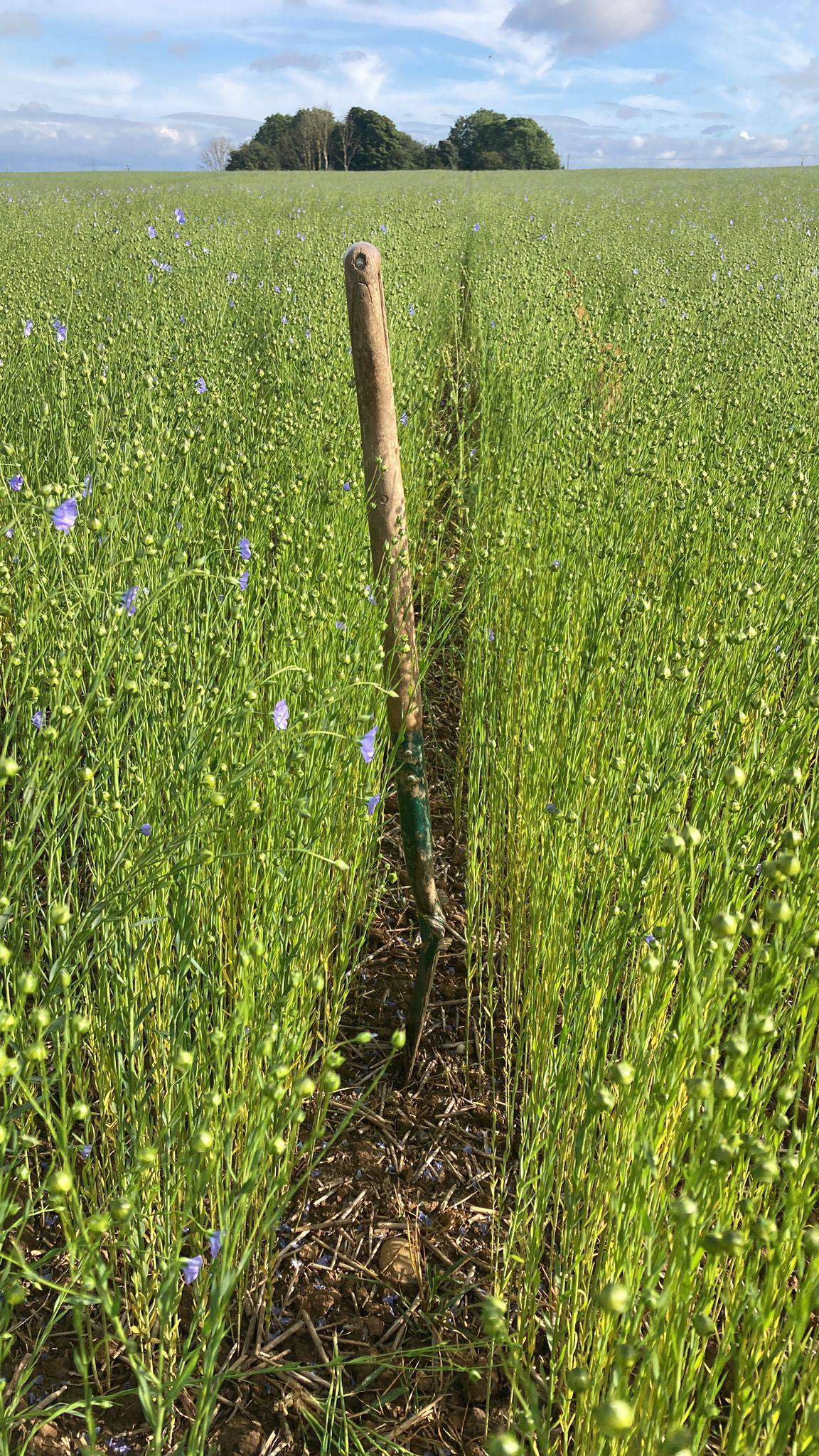
This year the farm has grown flax for a neighbouring farmer’s fibre business.
Changes are also happening to how he grows the more traditional crops on the farm. A catch crop of linseed, phacelia and tillage radish is established using a seed box mounted on a stubble rake between vining peas and winter wheat. It’s rolled immediately after and then left until wheat is direct drilled on the green into the catch crop, before glyphosate is applied a couple of days later.
This year’s catch crop was around 30cm tall when the LG Astronomer was drilled at the end of September. “We had good even coverage of the catch crop across the field,” explains Jonathan.
A catch crop of linseed, buckwheat and phacelia is being trialled on 10ha this autumn after OSR. “I’d always avoided it as I was concerned about slug pressure after OSR and thought it better to keep scratching the surface with a stubble rake to remove slug eggs, slugs and debris.
“We’re trialling a few things to evaluate whether it works before rolling it out across the farm,” he says.
That was also the case when he trialled grazing 180 sheep on 5ha of wheat for seven days in early March after they’d finished grazing overwintered cover crops.
“We had some dry weather, and it worked well with the sheep farmer managing it, but how we would replicate it on a field scale I don’t know yet – you would want it evenly grazed.”
Other potential challenges for rolling spring grazing out more widely is surface damage from the sheep’s hooves in a wet spring, and finding livestock farmers to work with. The crop was “nailed” by the sheep, he says. “I was a little worried about how little was left, but within 48 hours it was growing again.”
The idea was to remove all the early disease inoculum and to act as a growth regulator, reducing input requirements. The grazed area was split into two, with one half receiving no fungicides, and the other the same as the field programme. No growth regulator was applied to the field or the grazed area.
In late June, there was a noticeable height difference between the grazed and non-grazed area, and visually there looked to be less septoria in the grazed area. By mid-July, as the crop started to senesce, there was a clear difference in green leaf area with the grazed crop holding on in high temperatures better, he recalls.
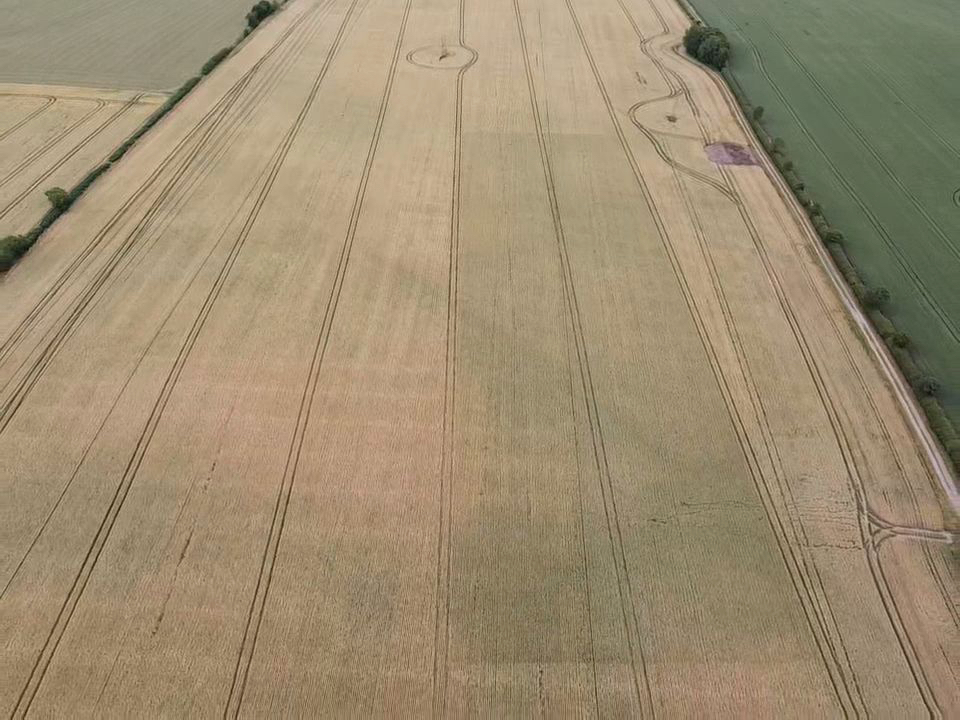
As the winter wheat began to senesce, the square area that was grazed by the sheep in spring is visible and is hanging on to its green leaf better.
Leaf sap analysis by NovaCropControl in the Netherlands was used to help inform nutrient requirements in every crop this season, except the vining peas. “It’s a big learning curve. Getting the analysis back in good time has been challenging, although I’m assured the data is still valid.”
He’s helped in the interpretation by Ben, and Ian Robertson of Sustainable Soil Management. There’s a degree of faith required that applications of micronutrients to correct deficiencies is providing a benefit, he admits.
“There’s also a lot more management involved, visually checking the crops, and attention to detail required.”
On wheat crops, applications of manganese, Bittersaltz, phosphite and Yara’s Krista MAP product have been made during the season as a result of the analysis.
Fungicides have varied depending on variety. Last season the more disease susceptible LG Detroit had a traditional three-spray programme costing around £100/ha, while this season the LG Astronomer, where treated, had only two fungicide sprays at half the cost but with additional nutrients. Theodore had no fungicides but a more comprehensive trace element nutrition programme.
“It’s a cracking variety that has an excellent disease resistance package. I’ve been monitoring it and saw no disease, so I haven’t put any fungicides on. We used a biostimulant, Scyon, at T2, which is supposed to boost plant defences.”
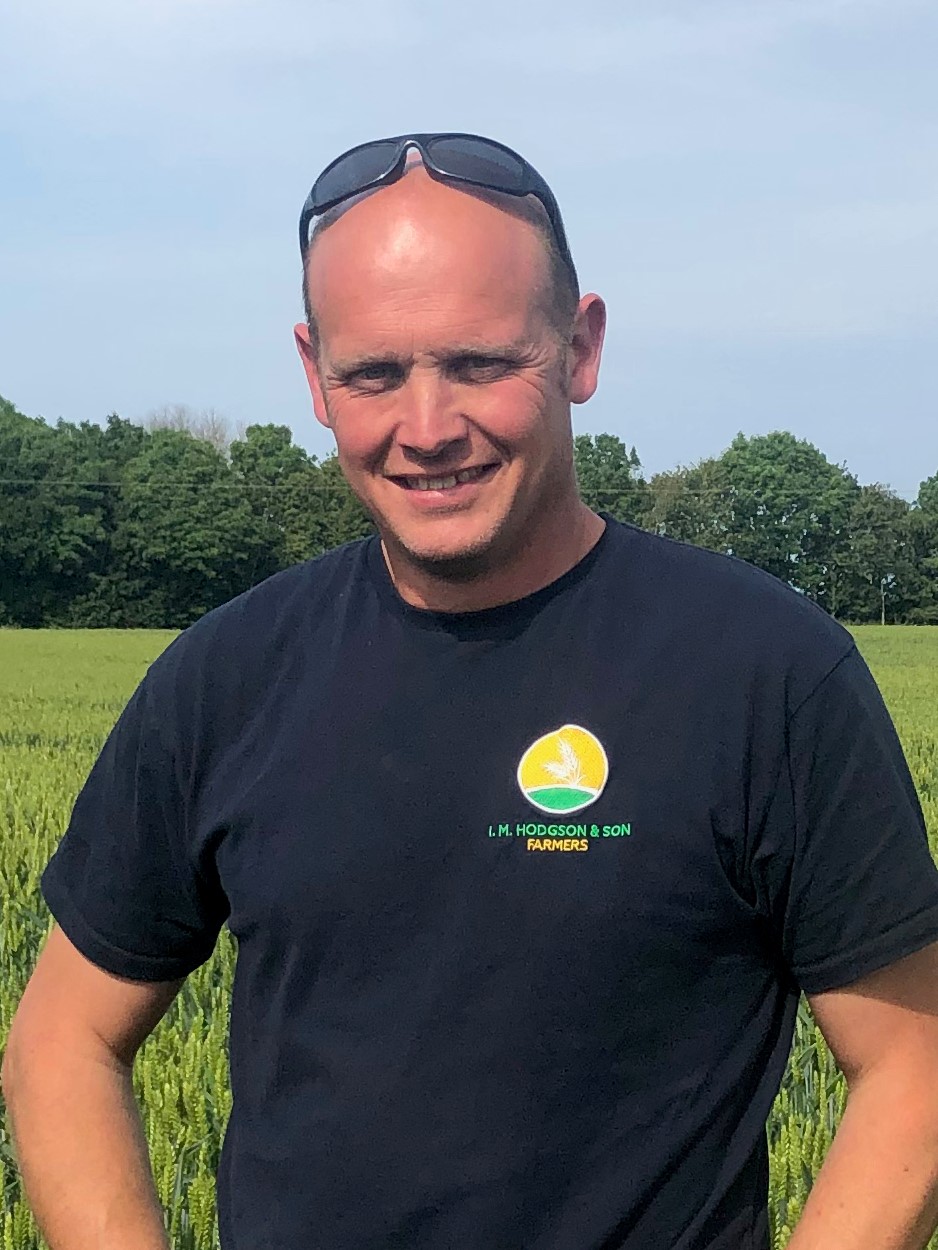
Jonathan Hodgson says he’s trying to get a longer rotation, not overdo any one crop and focus on first wheats to spread risk, as well as increasing diversity in the soil.
Another change to Jonathan’s wheat agronomy is a move to a little and often approach for nitrogen applications. Generally across the wheat he’s reduced N from 200kg/ha to 160kg/ha, now split into four doses all applied with 5 l/ha of molasses as a carbon source. On the grazed field of Astronomer he’s gone a little further and reduced to 120kgN/ha.
“We’re trying to be far savvier with our nitrogen applications. Nitrogen prices are far more than they’ve been historically, and nitrogen use efficiency is only 40-60%, according to experts.
“We need to make better use of it, and I think feeding the crop little and often will be a better approach as you don’t get that massive growth and then need a growth regulator,” he says.
As befitting someone who is keen to test new ideas on the farm, Jonathan has a whole host of ideas for future changes and additions.
Blackgrass remains a challenge on some fields, so a wider trial of interrow hoeing is planned for next spring following a trial with a 3m Claydon Terrablade this spring. “It was probably a bit too dry, so it was challenging to slice the blackgrass plants off at the right depth.”
In the dry conditions the blades were struggling to penetrate the soil, or even scratch the surface, he says. “You need that ‘Goldilocks’ situation where the soil is not too wet or too dry.
“I can see the potential, but you need the right conditions. You don’t want it to rain afterwards as they can root back in, so slightly moist soil and then no rain for at least 10 days afterwards.”
He’s also considering whether to invest in livestock of his own rather than rely on outside sources. One potential hurdle is the lack of livestock handling skills and infrastructure as cattle haven’t been on the farm for years, he admits. “It’s early days but mob grazing looks really interesting.”
Liquid applications of humic acid and fish hydrolysate down the legs when drilling to promote soil health were also tried last year. “But there was a challenge with the product, so hopefully it will work a bit better this season.
“I’m also talking to Shelbourne Reynolds about stripper headers, which look interesting. If I can just take the heads off and then plant a cover crop into stubble to leave overwinter, that would be ideal. We need to work out whether our drill will cope with that situation. It might open the door to growing herbage seed and getting grass into the rotation.”
Initial yield results more than promising
An exceptionally early harvest saw the 120kgN/ha Astronomer wheat field with the grazing trial harvested in late July. “We’ve never cut wheat in July before,” says Jonathan.
Despite that, the field averaged 13.1t/ha according to a moisture content-calibrated combine yield monitor – well above the farm’s 10-year rolling average of 9.6t/ha – and it recorded a specific weight of 80.2 kg/hl.
The grazing trial in the field yielded a little less at around 12.8t/ha. He didn’t record separate yields from the untreated and fungicide-treated grazed areas.
“The yield monitor was telling me that’s what the field averaged, which is crazy. I’m not one for pub yields and you get a feel for what’s doing well, so I think the yield is reasonably accurate, although until we get it over the weighbridge we won’t know for definite.
“It’s not unheard of for heavy land crops to do really well – we’ve had a cracking grain fill period with wall-to-wall sunshine, with a little bit of rain in early June when crops could take advantage of that moisture.”
It’s encouraged him that his alternative nutrition management, reduced fungicide and nitrogen applications have produced a very good crop. “The net margin looks pretty good.”
Spring barley challenge
Spring barley is proving to be the one crop that’s a real challenge to grow in Jonathan’s low-till system. “I’m not really sure why,” he says.
It’s an important crop for the farm, with his brother running Great Newsome Brewery on site for the past 15 years. The farm’s spring barley has been used for the past eight years after discovering malting quality was possible on its soils. “Since then, it has always been part of the rotation – it’s a good story and we’re adding value.”
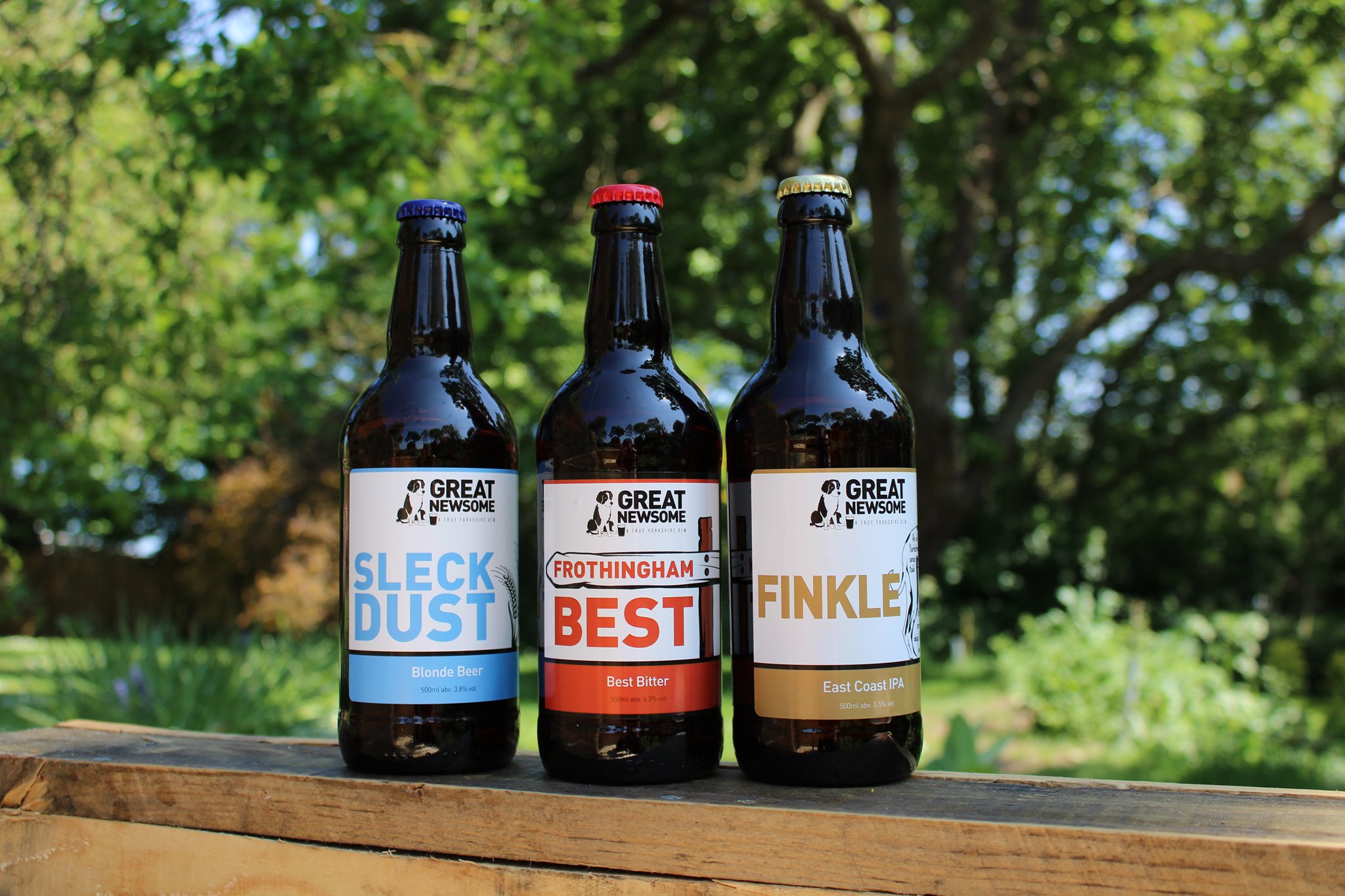
Malting barley is grown on the farm for family-owned Great Newsome Brewery, though Jonathan finds it a challenging crop to grow.
But the issue has been establishment, explains Jonathan. “It’s getting the crop up and away in these dry springs.”
This season he drilled in late March when soil temperatures had warmed up a bit, but it still struggled to find its feet and get away, he says. “Talking to other growers who are strip-tilling or no-tilling, they are having similar issues. It just doesn’t want to perform in this system compared with a more conventional one.”
The crop follows an overwintered cover crop. “Last year I tried a few different mixes, but we’ve settled on mustard, Daikon radish, forage rape, linseed, buckwheat, berseem clover and vetch.
“It’s grazed for five weeks by sheep and then terminated around four weeks before drilling.”
Unfortunately, it’s proving to be a bit of headache, he adds. “It’s a challenge even with the strip-till, so we are re-evaluating its place, and next season are likely to grow less to reduce our risk.”
This article was taken from the latest issue of CPM. For more articles like this, subscribe here.

